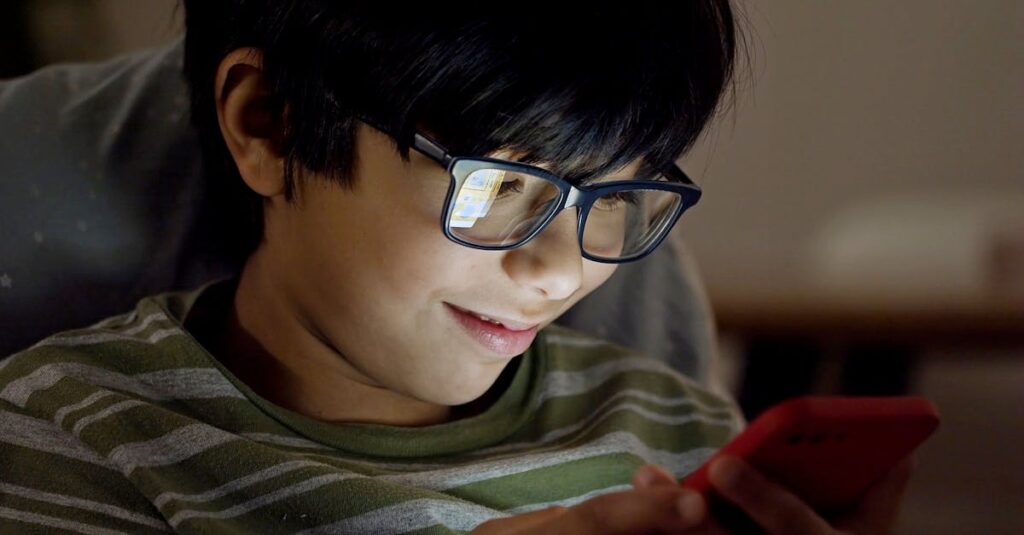The digital landscape has transformed our lives incredibly, bringing both convenience and challenges. One pressing concern is the impact that screen time has on eye health. With the average person spending over seven hours a day staring at screens, the ramifications for our vision can be serious. Understanding the effects of screen time on our eyes can help you take proactive steps to maintain your eye health.
Understanding Screen Time
Screen time refers to the amount of time an individual spends in front of digital devices, including smartphones, tablets, computers, and televisions. While technology has made it easier to work and connect with others, it has also led to an increase in sedentary behavior and exposure to digital screens. Many may not realize how this behavior contributes to various eye health issues.
Common Effects of Screen Time on Eye Health
Digital Eye Strain
Digital eye strain, often referred to as computer vision syndrome, encompasses a range of symptoms resulting from prolonged use of digital screens. Eye discomfort, blurred vision, and headaches are common complaints. According to a study from the American Optometric Association, nearly 50% of computer users experience symptoms of digital eye strain. This condition arises from factors such as reduced blinking, screen glare, and improper viewing distances.
Blue Light Exposure
Blue light emissions from screens may also be a concern. Research has suggested that extended exposure to blue light could contribute to retinal damage and disrupt sleep patterns. The American Academy of Ophthalmology warns that while blue light is not the sole cause of digital eye strain, it can be a contributing factor. Thus, being aware of blue light’s effects is essential for those who spend significant time in front of screens.
Dry Eye Symptoms
An increase in screen time can lead to dry eye symptoms. When using screens, individuals tend to blink less frequently—approximately one-third as often as they would normally. This reduced blinking results in less moisture on the surface of the eyes, leading to dryness, irritation, and discomfort. Symptoms may vary from mild to severe, often affecting daily activities and overall quality of life.
Long-Term Consequences of Excessive Screen Time
Potential Vision Issues
While short-term symptoms of digital eye strain are bothersome, excessive screen time may lead to long-term vision problems. Research indicates a rise in myopia, or nearsightedness, which is linked to increased screen use. The World Health Organization acknowledges that prolonged screen time among children can contribute to the development of myopia.
Impact on Eye Development in Children
Children are particularly vulnerable to the effects of screen time. Their eyes are still developing, and excessive screen exposure may hinder proper eye development. Studies show a correlation between high screen time and increased risks of eye conditions later in life. Parents and caregivers must monitor screen time to protect children’s vision and encourage healthy visual habits early on.
Solutions to Mitigate Screen Time Effects
The 20-20-20 Rule
Adopting the 20-20-20 rule can significantly alleviate discomfort caused by prolonged screen use. This rule suggests that for every 20 minutes of screen time, you should look at something 20 feet away for at least 20 seconds. This practice helps relax eye muscles and reduces strain, promoting healthier visual habits.
Regular Eye Checkups
Scheduling routine eye exams is crucial for monitoring and maintaining eye health, especially for those who spend considerable time on screens. Eye care professionals can identify signs of digital eye strain and recommend tailored solutions, including corrective lenses that block blue light and additional treatments if necessary.
Screen Settings Adjustments
Adjusting screen settings can make a substantial difference in comfort. Increasing text size, reducing glare, and customizing background settings to warmer tones can ease eye strain. Many devices also come equipped with blue light filters that can be activated during night-time use to reduce exposure.
Additional Tips for Healthy Screen Use
Proper Lighting
Ensuring adequate lighting in your workspace can reduce screen glare and minimize eye strain. Avoid working in overly bright or dimly lit environments; instead, aim for balanced, ambient lighting that complements screen use. Positioning your screen to avoid direct sunlight can also reduce glare.
Ergonomic Setup
Creating an ergonomic workspace is beneficial not only for overall comfort but also for eye health. Position your screen at eye level, approximately an arm’s length away. This setup encourages proper posture and minimizes strain on your eyes and neck.
Breaks and Outdoor Time
Incorporating regular breaks and outdoor time into your routine can help preserve eye health. Stepping outside for a few minutes allows your eyes to adjust to different visual environments, providing a necessary break from screen exposure. Engaging in outdoor activities also encourages physical movement, counteracting the sedentary lifestyle often associated with excessive screen use.
Ultimately, being aware of the effects of screen time on eye health is essential for sustainable digital habits. By understanding the common symptoms and long-term consequences, as well as implementing practical solutions, you can protect your vision while navigating an increasingly digital world. Prioritize your eye health today to ensure a clear and vibrant tomorrow.

